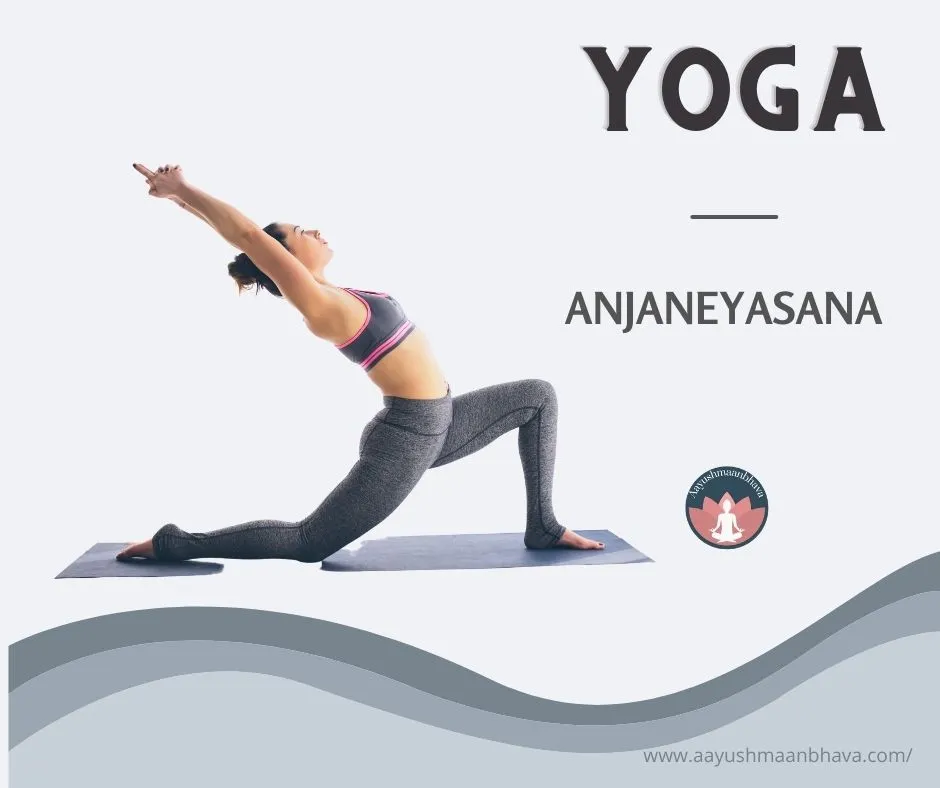Anjaneyasana, also known as Crescent Lunge, Low Lunge, or High Lunge Pose, is a powerful yoga pose that offers a wide range of physical and mental benefits. This pose is often included in yoga sequences and is practiced by yogis of all levels. This article will explore Anjaneyasana in-depth, including its history, benefits, how to do it, modifications and variations, precautions and contraindications, tips for practicing it, and more.
Anjaneyasana is named after the Hindu monkey god Hanuman, also known as Anjaneya. This pose is believed to have originated in India and has been practiced for centuries in traditional yoga practices. Today, Anjaneyasana is commonly practiced in modern yoga classes and is known for its ability to stretch and strengthen the legs, hips, and lower back. This pose is also considered a heart opener, allowing practitioners to tap into their inner strength and courage.
Table of Contents
ToggleHow to do Anjaneyasana
- Anjaneyasana can be practiced in a few different ways, depending on the level of the practitioner and the desired benefits. Here are the steps to perform the basic version of Anjaneyasana:
- Begin in Tadasana (Mountain Pose) at the top of your mat.
- Step your left foot back, keeping the heel lifted and the toes pointing forward.
- Lower your left knee to the ground, ensuring it is directly beneath your left hip and your right knee above your right ankle.
- Inhale and raise your arms overhead, reaching up through your fingertips and keeping your shoulders relaxed.
- Exhale and sink your hips towards the floor, extending your front knee directly above your ankle and your back leg.
- Hold the pose for deep breaths, then release and switch sides.
Modifications and Variations
Anjaneyasana can be modified and varied in many ways to suit different body types, levels of flexibility, and specific goals. Here are a few examples:
- To increase the stretch in the hip flexors, lift the arms and gaze towards the ceiling.
- To deepen the stretch in the quadriceps, reach back with the left hand and grab the left foot, pulling it towards the buttocks.
- To challenge balance and core strength, lift the back knee off the ground and enter High Lunge Pose.
- To modify the pose for injuries or limitations, place a cushion or folded blanket under the knee, or practice against a wall for support.
Benefits of Anjaneyasana
Anjaneyasana offers numerous physical and mental benefits, including:
A. Physical benefits:
Stretching and strengthening the legs, hips, and lower back: Anjaneyasana stretches the hip flexors, hamstrings, and quadriceps while strengthening the glutes, quads, and calves.
Improving balance and posture:
Anjaneyasana strengthens the muscles that support the spine and helps to improve balance and stability.
Stimulating digestion and metabolism:
The stretching and compression of the abdomen in asana helps to stimulate digestion and metabolism.
B. Mental benefits:
Calming the mind and reducing stress:
Anjaneyasana is a gentle, grounding pose that helps to calm the mind and reduce stress and anxiety.
Improving concentration and focus:
Practicing Anjaneyasana helps to improve concentration and focus, as you must stay present and aware of your body and breath.
Promoting feelings of positivity and well-being:
Anjaneysana is a heart opener that can promote feelings of positivity and well-being. It can help to release tension and negative emotions and cultivate a sense of gratitude and compassion.
Precautions and Contraindications
As with any yoga pose, Anjaneyasana should be practiced with caution and mindfulness. Here are a few precautions and contraindications to be aware of:
Avoid Anjaneyasana if you have knee or ankle injuries or conditions.
If you have lower back pain, engage your core muscles and maintain a slight pelvic tilt throughout the pose.
Pregnant women should avoid deep lunges and modify the pose by placing a cushion or folded blanket under the knee or practicing against a wall for support.
If you experience any pain or discomfort while doing the pose, release and come out of it immediately.
Tips for Practicing Anjaneyasana
Here are a few tips to help you get the most out of your Anjaneyasana practice:
Warm up the body before practicing Anjaneyasana. One can do so through a few Sun Salutations or other gentle yoga poses.
Use props, such as blocks or blankets, to modify the pose and make it more accessible or comfortable.
Breathe deeply and mindfully in the pose, allowing the breath to guide you deeper into the stretch.
Practice regularly to build strength and flexibility in the legs, hips, and lower back.
Conclusion
Anjaneyasana, also known as Crescent Lunge, Low Lunge, or High Lunge Pose, is a powerful yoga pose that offers a wide range of physical and mental benefits. This pose stretches and strengthens the legs, hips, and lower back, improves balance and posture, stimulates digestion and metabolism, calms the mind and reduces stress, improves concentration and focus, and promotes positivity and well-being.
With modifications and variations available, Anjaneyasana can be practiced by yogis of all levels and body types. As with any yoga pose, it should be practiced with caution and mindfulness and can be incorporated into a regular yoga practice for maximum benefits.
Watch Video

